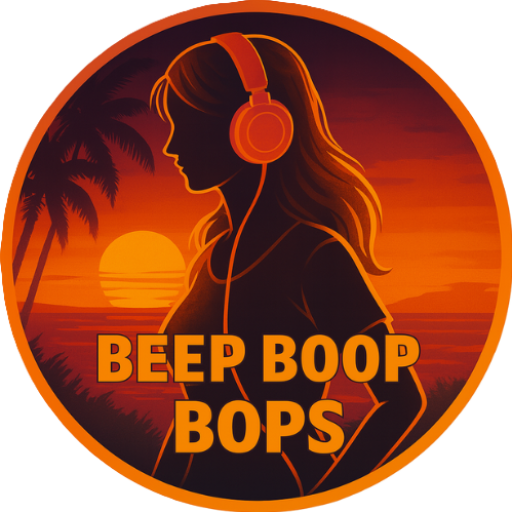In today’s digital age, having a strong online presence is essential for musicians and artists alike. A music portfolio website serves as your personal stage on the internet, allowing you to showcase your talent, connect with fans, and attract potential collaborators or industry professionals. This platform is not just a collection of your work; it’s a reflection of your artistic identity and a tool for building your brand.
Whether you are an aspiring artist or an established musician, a well-crafted portfolio website can significantly enhance your visibility and credibility in the competitive music industry. Creating a music portfolio website is more than just uploading tracks and videos; it’s about curating an experience that resonates with your audience. You want to create a space where visitors can immerse themselves in your music, learn about your journey, and feel connected to your artistry.
As you embark on this journey, consider how you want to present yourself and what message you wish to convey through your website. This article will guide you through the essential elements of building an effective music portfolio website, ensuring that you make a lasting impression on anyone who visits.
Key Takeaways
- A music portfolio website is essential for musicians to showcase their work and connect with their audience.
- When choosing a platform for your music portfolio, consider factors such as customization options, ease of use, and cost.
- Your professional bio and “About Me” section should be concise, engaging, and highlight your unique story and musical style.
- Showcasing your music and videos on your portfolio website can be done through embedded players, playlists, and high-quality visuals.
- Engage your audience by regularly updating a blog or news section with behind-the-scenes content, upcoming events, and personal insights.
- Make it easy for visitors to contact you and integrate your social media profiles for seamless interaction and promotion.
Choosing the Right Platform for Your Music Portfolio
Selecting the right platform for your music portfolio is a crucial step in establishing your online presence. With numerous website builders available, it’s important to choose one that aligns with your needs as a musician. Consider factors such as ease of use, customization options, and the ability to integrate multimedia elements like audio and video.
Platforms like WordPress, Wix, and Squarespace offer user-friendly interfaces and templates specifically designed for musicians, making it easier for you to create a visually appealing site without needing extensive technical skills. As you evaluate different platforms, think about the features that are most important to you. Do you want to sell your music directly from your site?
Are you looking for robust blogging capabilities? Or perhaps you need a platform that allows for seamless integration with social media? By identifying your priorities, you can narrow down your options and select a platform that not only meets your current needs but also has the potential to grow with you as your career evolves.
Remember, your website is an investment in your future as an artist, so take the time to choose wisely.
Creating a Professional Bio and About Me Section

Your bio and “About Me” section are critical components of your music portfolio website. This is where you have the opportunity to tell your story and connect with your audience on a personal level. A well-crafted bio should highlight your musical journey, influences, and achievements while maintaining an authentic voice that reflects who you are as an artist.
Avoid jargon and overly complex language; instead, aim for a conversational tone that invites readers in and makes them feel like they know you. In addition to sharing your background, consider including anecdotes or experiences that shaped your musical path. Perhaps there was a pivotal moment when you realized your passion for music or a particular challenge you overcame that resonates with others.
This personal touch can create a deeper connection with your audience and make them more invested in your work. Remember to keep it concise; while it’s important to share your story, visitors should be able to read through it quickly without losing interest. A compelling bio can set the tone for the rest of your website and encourage visitors to explore more of what you have to offer.
Showcasing Your Music and Videos
The heart of any music portfolio website lies in its ability to showcase your music and videos effectively. This is where potential fans and industry professionals will get their first taste of your sound, so it’s essential to present your work in the best possible light. Start by curating a selection of your best tracks and videos that represent your style and artistry.
Consider creating dedicated sections for different types of content, such as singles, albums, live performances, or music videos, making it easy for visitors to navigate through your work. When embedding audio or video players on your site, ensure they are user-friendly and visually appealing. You want visitors to be able to listen or watch without any technical difficulties.
Additionally, consider including descriptions or stories behind each piece of music or video. This not only provides context but also engages your audience further by giving them insight into your creative process. By thoughtfully showcasing your music and videos, you can create an immersive experience that encourages visitors to explore more of your work and share it with others.
Engaging Your Audience with a Blog or News Section
A blog or news section on your music portfolio website can serve as an excellent tool for engaging with your audience and keeping them updated on your latest activities. Regularly posting content allows you to share insights into your creative process, announce upcoming shows or releases, and discuss topics related to the music industry or your personal experiences as an artist. This not only keeps your audience informed but also fosters a sense of community around your work.
When writing blog posts, aim for authenticity and relatability. Share stories about challenges you’ve faced in the industry, lessons learned from performances, or even tips for aspiring musicians. Engaging content can encourage visitors to return to your site regularly and interact with you through comments or social media shares.
Additionally, incorporating multimedia elements such as photos or videos into your blog posts can enhance the overall experience and make it more visually appealing. By maintaining an active blog or news section, you can cultivate a loyal following that feels connected to you and invested in your journey.
Contact Information and Social Media Integration

Finally, ensuring that visitors can easily contact you is vital for fostering connections within the music industry. Your website should include clear contact information, whether it’s an email address for booking inquiries or links to social media profiles where fans can follow you. Make it easy for potential collaborators, promoters, or fans to reach out by providing multiple avenues for communication.
A dedicated contact page can streamline this process and make it clear that you welcome engagement from visitors. Social media integration is another key aspect of connecting with your audience. By linking your social media accounts directly on your website, you allow visitors to follow you across platforms effortlessly.
This not only increases your online presence but also encourages fans to engage with you on multiple levels. Consider adding social media buttons that are easily accessible from every page of your site, ensuring that visitors can connect with you no matter where they are on their journey through your portfolio. By prioritizing contact information and social media integration, you create an inviting atmosphere that encourages interaction and builds lasting relationships with fans and industry professionals alike.
In conclusion, creating a music portfolio website is an essential step in establishing yourself as an artist in today’s digital landscape. By carefully considering the platform you choose, crafting a compelling bio, showcasing your music effectively, engaging with audiences through a blog, and ensuring easy contact options, you can create a powerful online presence that resonates with visitors. Your website is not just a collection of links; it’s a dynamic representation of who you are as a musician and what you have to offer the world.
Embrace this opportunity to share your passion for music and connect with others who appreciate it just as much as you do.



